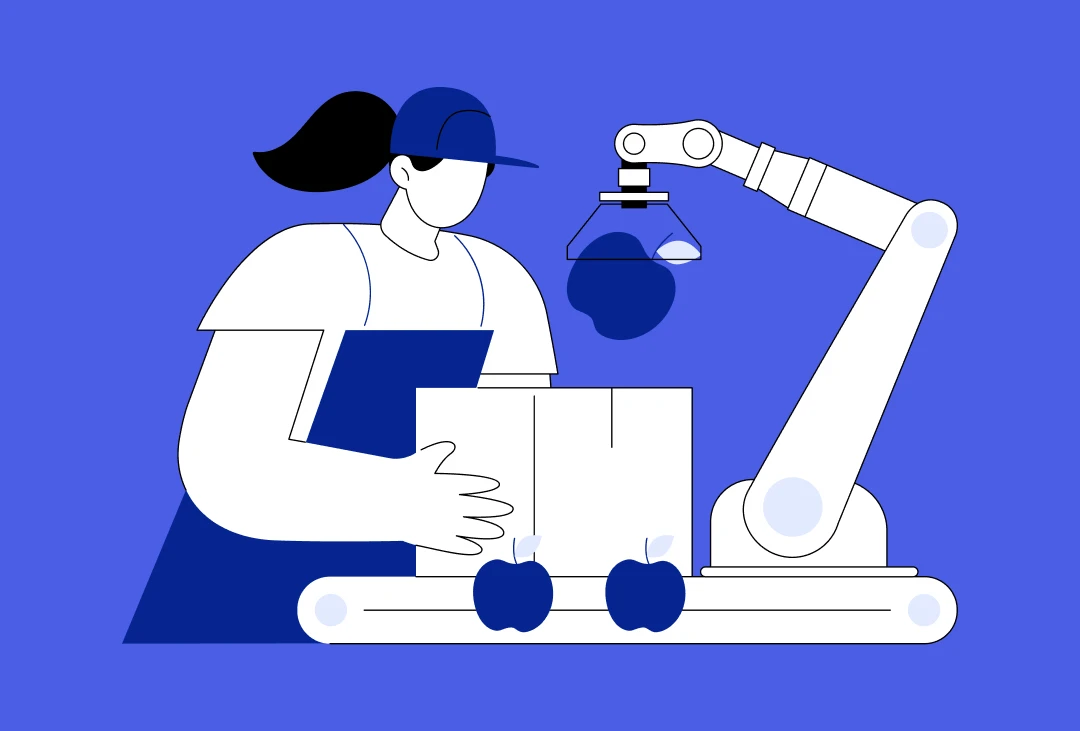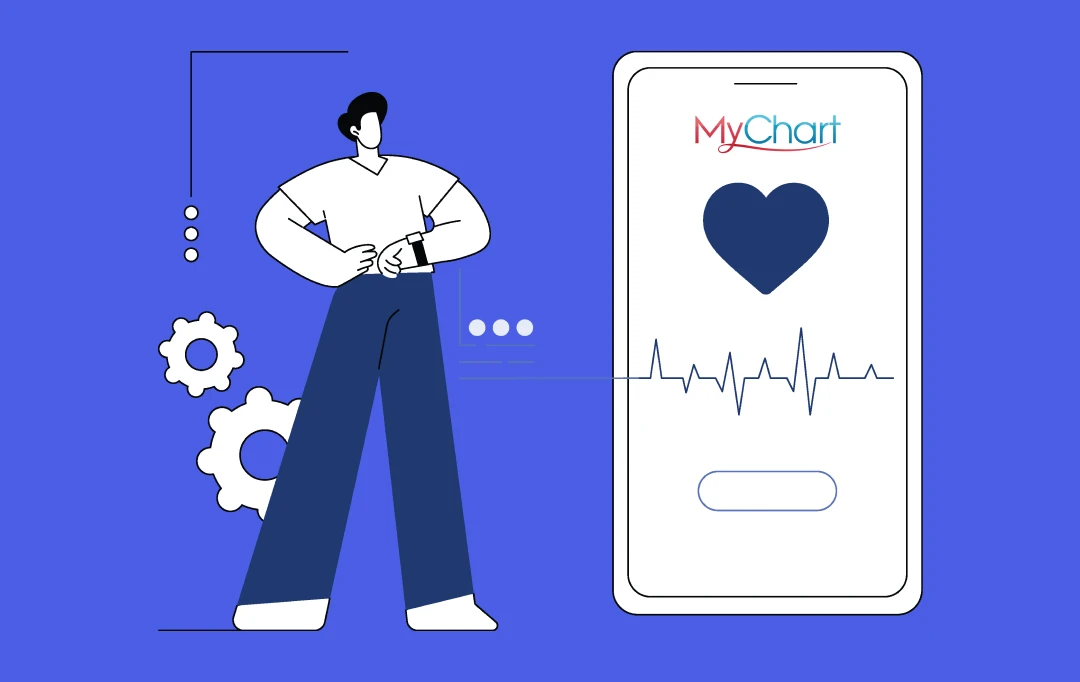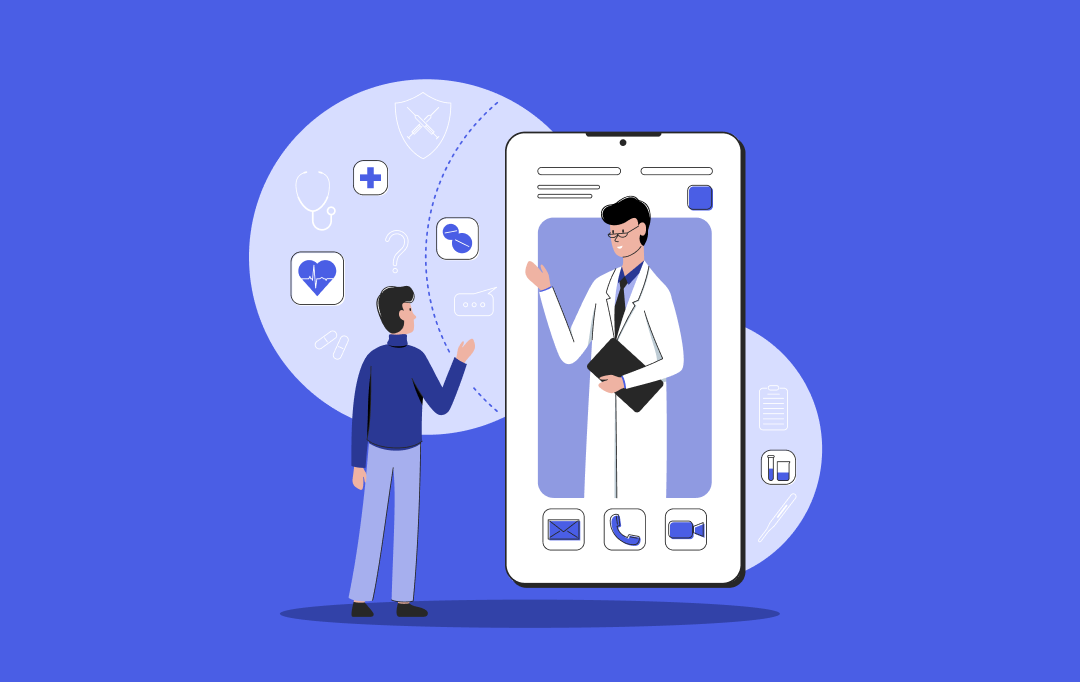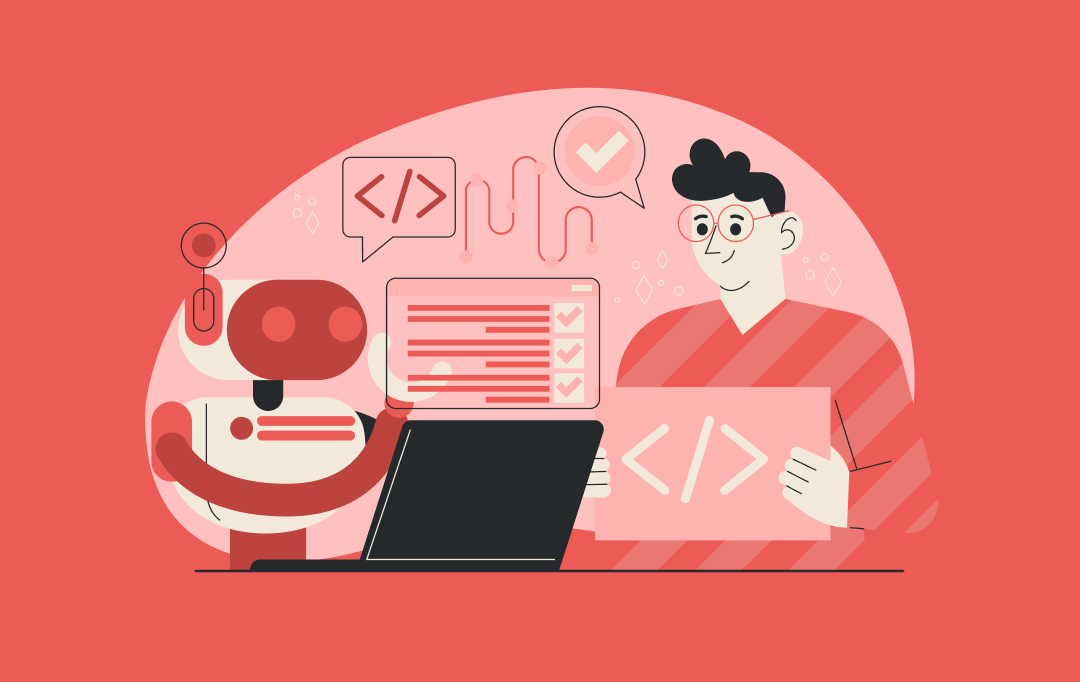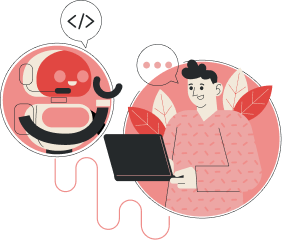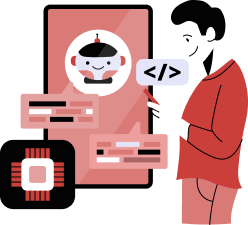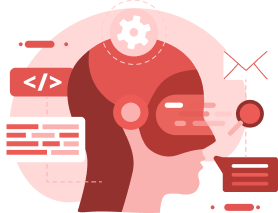- What a Top Generative AI Developer Really Means
- Skills That Separate Top Developers from the Rest
- Core Technical Skills
- Adjacent Skills
- Soft Skills
- Red Flags in Hiring
- Hiring Needs Across the AI Lifecycle
- Stage 1: Discovery & Validation
- Stage 2: Proof of Concept (PoC)
- Stage 3: MVP & Pilot
- Stage 4: Full Deployment & Scaling
- In-House vs Outsourcing vs Hybrid
- In-House Teams
- Freelancer
- Agency Outsourcing
- Hybrid Approach (The 2025 Reality)
- The True Cost of Hiring Generative AI Developers
- Salary Benchmarks
- Core Cost Drivers
- Hidden Costs (Often Missed)
- The ROI Paradox
- Risk, Ethics & Compliance, Hiring Non-Negotiables
- Key Risks Enterprises Face
- Hiring Criteria to Mitigate Such Risks
- Evaluating Developers vs Partnering with Appinventiv
- Tips on How to Hire Generative AI Developers
- Why This Often Fails
- Why Companies Work With AI Partners Instead of Solo Developers
- Why Enterprises Choose Appinventiv
- The Appinventiv Advantage
- What We Deliver
- FAQs
Key takeaways:
- Generative AI is moving fast. To scale beyond experiments, enterprises need more than hobbyist coders. They need to hire best generative AI developers or structured teams with proven experience in LLMs, orchestration, and compliance.
- What separates strong talent: expertise on fine-tuning large models, building RAG pipelines, orchestrating multi-agent workflows, and designing systems that pass audits. In other words, developers with true Generative AI project experience.
- Hiring needs evolve by stage. Discovery, PoC, MVP, and full deployment all demand different skill mixes. An expert generative AI developer may shine in model tuning, but scaling requires a broader team with MLOps, infra, and compliance roles.
- Compliance is non-negotiable. Ignoring governance, fairness, or explainability is the fastest way for a project to fail. This is where a strong Generative AI architect makes the difference by baking compliance into the system from the start.
- One person can’t do it all. That’s why so many projects stall at PoC. Enterprises that succeed usually build cross-functional teams that cover every gap – from infrastructure to compliance – and keep momentum all the way to enterprise scale.
Generative AI is no longer hype, it’s already reshaping industries from financial services to healthcare to retail. Agentic AI, the next evolution, goes further: AI systems that not only generate content but also reason, plan, and act across multi-step processes.
McKinsey reports that, 92% of organizations are increasing their AI investments, yet only 1% of leaders believe their companies are mature in deploying AI at scale. Nearly half of business leaders (around 46%) cite skill gaps as a key obstacle to scaling AI.
But here’s the catch: when you look to hire generative AI developers it’s not the same as hiring a developer or engineer. It’s about securing the right blend of technical depth, compliance expertise, and lifecycle readiness. Which is why this guide unpacks how to hire generative AI developers, exploring the real costs, skills, rispks, and lifecycle needs. While showing why enterprises like yours can rely on Appinventiv’s AI teams instead of struggling to assemble fragmented resources.
Gartner says 30% of GenAI projects stall after proof of concept.
Appinventiv’s Gen AI developers help you go beyond pilots with safe, scalable deployment.
What a Top Generative AI Developer Really Means
The phrase “generative AI developer” is often misunderstood. Many freelancers and junior engineers use it loosely after experimenting with small-scale demos or calling an API from OpenAI or Hugging Face. But when enterprises attempt to build mission-critical systems — especially those incorporating agentic AI capabilities — the definition changes drastically. Enterprise-grade AI requires hiring generative AI experts who go beyond writing prompts.
Top generative AI developers aren’t just coders. They are specialists capable of bridging research-grade AI with business-grade applications. Here’s what that really means:
Understands probabilistic systems
They can fine-tune LLMs with methods like LoRA and RLHF, applying advanced techniques to shape model behavior. Just as importantly, they know how to manage uncertainty through temperature tuning, beam search, and grounding results in vector databases.
Designs orchestration for agentic AI
They build multi-agent workflows where systems collaborate, use tools, and execute tasks autonomously. Developers skilled in LangChain and AutoGen stand out, but enterprises often need gen AI software development experts who can orchestrate agents at scale to ensure reliable, production-grade AI performance.
Build compliance-ready systems
In real-world deployments, compliance can’t be treated as an afterthought. A strong developer knows how to build fairness checks and bias detection directly into the model pipeline, rather than bolting them on later. They’re also comfortable using explainability tools that make decisions transparent enough to pass an audit. This matters because frameworks like GDPR, HIPAA, and the EU AI Act don’t just ask for safe outcomes — they require proof of how those outcomes were produced.
Thinks beyond code
What separates the best generative AI developers from the rest is perspective. They don’t just tune a model and hand it over; they think about what those choices mean for the business. A small change in how a model is configured can affect customer trust, operational costs, or even compliance risk. The right developer can connect those dots and explain trade-offs in terms an executive team understands — whether it’s faster approvals, lower error rates, or reduced fraud. They work just as comfortably with product managers and compliance officers as they do with engineers.
Skills That Separate Top Developers from the Rest
The skills required for hiring generative AI developers extend well beyond coding ability — compliance, governance, and orchestration matter just as much. Hiring for generative AI isn’t about checking a box that says “AI experience”. Plenty of candidates add it to their résumés after tinkering with prebuilt APIs or running small projects on GitHub. But enterprises don’t need hobbyists, they need professionals who can build production-grade, scalable, and compliant systems that hold up under real-world demands. That’s why they need to understand how to hire generative AI developers that meet the industry demands and skills.
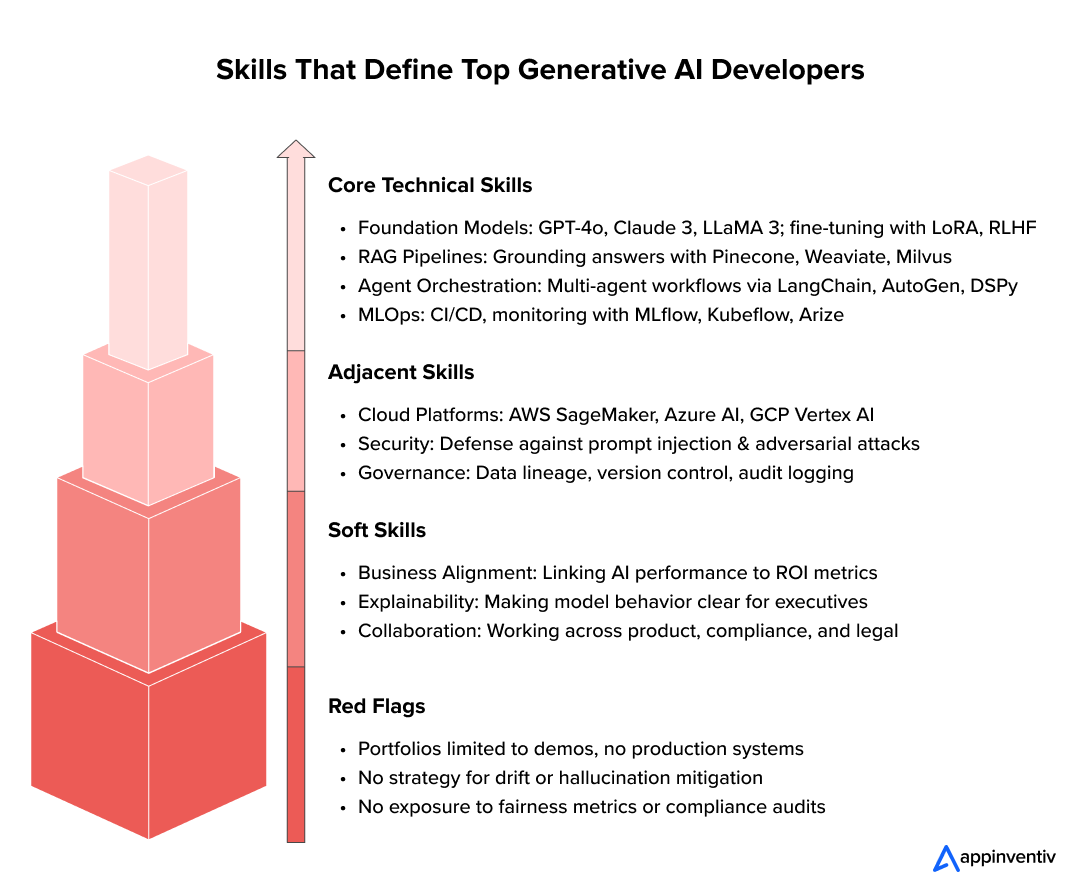
Core Technical Skills
Enterprises that recruit generative AI talent look for depth in the fundamentals — not just knowing how to call an API, but how to design systems that work reliably at scale. A solid generative AI developer skills checklist includes foundation model expertise, RAG pipelines, and multi-agent orchestration.
- Foundation model expertise: Real-world projects demand more than prompt engineering, they need expert generative AI developers who can fine-tune models for domain-specific tasks. Top developers have worked hands-on with models like GPT-4o, Claude 3, or LLaMA 3 and know how to adapt them using fine-tuning techniques such as LoRA and RLHF. Enterprises that hire experienced generative AI developers get models customized. This allows them to mold general-purpose models into domain-specific problem solvers.
- RAG pipelines: Instead of letting models guess, they know how to ground answers with enterprise data. Practical experience with vector databases is one of the key skills required for hiring generative AI developers.
- Multi-agent orchestration: Business problems often require more than a single model response. Skilled developers can orchestrate multiple agents that plan, reason, and act together using frameworks like LangChain, AutoGen, or DSPy. This is what makes AI systems useful beyond chatbots.
- MLOps expertise: Building the model is only half the job. The rest is making sure it runs reliably in production. Teams that hire dedicated generative AI developers with MLOps skills can set up CI/CD pipelines, monitoring, and retraining processes with tools such as MLflow, Kubeflow, and Arize, ensuring systems don’t degrade once deployed, something only generative AI software development experts consistently deliver.
Adjacent Skills
Even if you hire the best generative AI developers, AI doesn’t live in isolation. Production-ready systems depend on knowledge of the broader ecosystem.
- Cloud platforms: Whether it’s AWS SageMaker, Azure AI, or Google’s Vertex AI, strong developers know how to deploy at scale, manage infrastructure costs, and integrate seamlessly with enterprise IT stacks.
- Security: Generative AI introduces new attack surfaces. Developers must understand risks like prompt injection, adversarial manipulation, or data leakage — and know how to defend against them.
- Governance: Audit trails, version control, and data lineage aren’t nice-to-haves — they’re survival tools in a regulated environment. Developers who bake these into their workflows make compliance checks far less painful. That’s why enterprises should insist on qualified generative AI developers who understand audit trails and regulatory frameworks.
Soft Skills
Enterprises can’t succeed with technical ability alone. The strongest generative AI experts connect their work to business impact. Collaboration and business alignment also belong in the generative AI developer skills checklist, not just technical know-how.
- Business alignment: They can explain how model performance affects real outcomes — lowering fraud rates, speeding up approvals, or cutting acquisition costs. That’s how technical results translate into executive buy-in.
- Explainability: A developer who can’t explain why a model made a decision is a liability. The best use tools like SHAP or LIME to make AI behavior transparent and understandable to non-technical leaders.
- Collaboration: Compliance officers, legal teams, and product managers all need to work with AI developers. Strong hires know how to bridge those worlds instead of working in silos.
Red Flags in Hiring
Not everyone who claims “AI expertise” is ready for enterprise work — a reminder that following a generative AI hiring guide is essential. Warning signs include:
- Among the tips for hiring AI developers in generative AI, watch out for candidates who only showcase GitHub demos or Kaggle notebooks without deployments.
- Inability to explain how they would mitigate hallucinations or handle model drift in a live environment.
- No exposure to audits, fairness metrics, or compliance-driven development.
Hiring Needs Across the AI Lifecycle
AI projects don’t move in a straight line, they evolve in phases. The generative AI developer hiring process looks very different at discovery, PoC, and scaling stages. The skills, team setup, and risks look very different depending on whether you’re still exploring ideas or rolling out a global deployment. Enterprises that use a structured generative AI developer skills checklist avoid hiring mismatches and wasted time.
Stage 1: Discovery & Validation
This is the “idea stress test” phase. You don’t need a big team, but you do need the right mix of minds. Business analysts help frame the problem in a way AI can solve, data specialists check whether the data you have is even usable, and a domain SME keeps the whole effort grounded in reality. Even at the idea validation stage, a clear generative AI workforce strategy ensures you’re not wasting resources on misaligned skills.
- Team size: when you recruit generative AI talent, usually 1–2 AI developers plus a subject matter expert.
- Output: a validated use case or hypothesis with initial benchmarks.
At this stage, costs stay low. But the wrong decisions here — like ignoring regulatory requirements or assuming messy data won’t matter — can come back later as expensive problems.
Stage 2: Proof of Concept (PoC)
At this stage, companies often push to hire generative AI developers who can prove the idea. This is where developers build quick RAG pipelines, prototype workflows, and test whether the model behaves the way it should. The goal isn’t perfection; it’s to show the concept has teeth.
- Team size: 2–4 developers who can iterate fast.
- Output: a working demo with clear KPIs — accuracy, latency, hallucination rate, and safety checks.
Many companies stall here because they don’t plan for infrastructure or compliance early enough. Without clear planning, projects often fail to move beyond the PoC stage.
Stage 3: MVP & Pilot
When compliance and MLOps become critical, generative AI staff augmentation fills short-term gaps in expertise. However, if PoC shows promise, you’ll need to hire dedicated generative AI developers to make it real. By the MVP stage, the role of a generative AI architect becomes critical to align infra, compliance, and scaling. Monitoring, versioning, and logging all need to be baked in — because now you’re in the wild with real users.
- Team size: 3–5 cross-functional engineers (including at least one MLOps engineer, a data engineer, and a compliance/ethics lead).
- Output: a limited but production-ready deployment that meets basic compliance and safety standards.
This stage is where enterprises discover whether their AI is actually enterprise-ready or just a clever demo.
Stage 4: Full Deployment & Scaling
At this point, you’re no longer testing — you’re committing. Models must be orchestrated across workflows, retraining pipelines keep them fresh, dashboards monitor performance, and governance frameworks make audits routine instead of crises. Scalability challenges around latency, throughput, and reliability are constant companions.
- Team size: a larger, multi-disciplinary squad — AI developers, MLOps, cloud engineers, compliance/legal, and operations.
- Output: enterprise-wide deployment with SLAs, performance guarantees, and the ability to evolve without major rework.
This is where hiring generative AI experts makes the payoff happen — but only for enterprises that staffed and planned each earlier stage properly.
Appinventiv delivers not just developers, but outcome-driven generative AI development services aligned with your business goals, industry compliance, and enterprise-scale needs.
In-House vs Outsourcing vs Hybrid
When building generative AI teams, the choice between in-house teams, outsourcing, or a hybrid approach determines not just costs but also speed-to-market and long-term competitiveness. Decision-makers must balance control, compliance, and scalability.
| Model | Pros | Cons | Best For |
|---|---|---|---|
| In-House Teams | Full control; stronger IP protection; long-term capability building | $1M+ annual burn; 6–12 months to recruit; retention challenges | Large tech firms with R&D capacity and patience for scale |
| Freelancer | Quick start; low cost for small experiments | Fragmented skills; limited compliance and scalability; risk of turnover | Solo founders or early PoCs with minimal complexity |
| Agency Outsourcing | Fast ramp-up; access to expert generative AI developers; compliance-ready delivery; proven playbooks for scaling | May require upfront alignment on scope and governance | Startups and enterprises wanting speed, specialized AI skills, and reliable scaling |
| Hybrid Approach | Balance of domain knowledge + external AI skills; faster scaling; compliance flexibility | Requires strong governance; potential integration friction | Enterprises moving from MVP to production deployments |
In-House Teams
Large tech firms often attempt to build an enterprise generative AI team internally, but costs and retention challenges remain steep. Salaries alone don’t tell the whole story; add GPU or cloud bills, data engineering, and compliance overhead, and the annual burn can climb past a couple of million dollars very quickly. Then there’s the hiring problem.
Finding the right people takes months, sometimes the better part of a year, and the market is competitive enough that keeping them is just as hard as hiring them. Losing one or two key people at the wrong time can set an entire project back.
Best fit: enterprises with deep pockets and a long-term vision for building internal AI research or centers of excellence.
Freelancer
Many startups use Generative AI staff augmentation with individual freelancers to move fast and keep early costs low. Freelancers can quickly prototype or validate ideas without long-term commitments, making them ideal for testing if an idea has technical feasibility. They’re easy to bring on board and can start work almost immediately with minimal process overhead.
But most freelancers only cover one part of the tech stack, leaving gaps in compliance, security, or scalability once a project grows beyond a proof of concept. Coordinating several freelancers can also create communication issues and slow progress as the work becomes more complex.
Best fit: very early-stage experiments or quick proof of concepts where speed matters more than long-term stability.
Agency Outsourcing
Working with specialized agencies that provide expert generative AI developers gives companies fast access to a complete range of skills, from model fine-tuning to compliance-ready deployment. Agencies also bring proven frameworks, project management, and technical depth that help maintain quality and reduce risk as projects grow.
Unlike solo freelancers, agencies often come with pre-built accelerators, monitoring tools, and domain knowledge, which speeds up delivery and prevents costly mistakes. They can also scale teams quickly when project demands increase, so work doesn’t stall.
Best fit: startups and enterprises looking for reliable scaling, structured delivery, and end-to-end AI capability without building everything from scratch internally.
Hybrid Approach (The 2025 Reality)
The model most enterprises are leaning toward now is a mix of the two. However, even in hybrid setups, a generative AI architect is important to ensure outside experts integrate smoothly with in-house teams. Keep your domain knowledge and compliance oversight in-house, and lean on outside experts for what they do best — fine-tuning models, setting up orchestration, or building MLOps pipelines. Done right, this lets you move quickly without losing control of the parts that matter most, something every Generative AI hiring guide recommends.
The tricky part is coordination. If you don’t define responsibilities clearly, it’s easy for work to overlap or for gaps to appear. Hybrid setups succeed when in-house compliance staff are paired with external generative AI software development experts who bring deep technical expertise.
Best fit: enterprises moving beyond pilots, ready to scale into production systems without compromising on compliance or trust.
The True Cost of Hiring Generative AI Developers
Companies that want to hire generative AI developers often start by looking at salaries. That’s the line item that shows up first and feels easiest to benchmark. But in reality, salaries are just the tip of the iceberg. Once you add in infrastructure, data operations, compliance, and the ongoing cost of keeping models accurate and secure, the total spend can easily run two to three times higher than what leaders initially budgeted. Similar to how enterprises often underestimate the full cost of large-scale cloud or data platform adoption, AI budgets can quickly balloon beyond initial expectations.
Salary Benchmarks
The market for generative AI talent is tight, and pay scales reflect that scarcity:
- United States: $150K–$250K per year; contractors often bill at $100–$150 an hour.
- Europe (UK, Germany, France): €90K–€160K ($105K–$187K) per year; €80–€120 ($93–$140) an hour for contractors.
- India: ₹20–50 LPA ($24K–$60K); in India, consultants range from ₹3,000–₹6,000 ($36–$72) per hour, and many startup generative AI developers operate in this band for early projects.
- LATAM & Southeast Asia: 20–40% lower for firms that hire remote generative AI developers, but access to senior specialists is limited.
These figures tell part of the story, but not the whole. Salaries don’t include benefits, recruiting overhead, or the other roles you inevitably need when you recruit generative AI talent to manage pipelines, MLOps specialists to handle deployment and monitoring, and compliance officers to make sure you don’t stumble on regulations. By the time you add those in, the real cost picture looks very different.
Core Cost Drivers
Beyond salaries, several technical and regulatory realities drive up costs. Budgeting isn’t just about salaries — enterprises also need a generative AI workforce strategy to balance developers, MLOps, and compliance roles..
Compute infrastructure
Running generative AI at scale isn’t cheap. McKinsey estimates global data center capacity will need to nearly triple by 2030 to meet AI demand, driving about $5.2 trillion in capital expenditures for compute infrastructure alone. That explosive growth translates directly into rising costs for enterprises, not just in training large models but also in keeping inference affordable at production scale.
Data pipelines
Data preparation often consumes 15–25% of AI project budgets. This includes cleaning, labeling, augmentation, and governance. Without properly designed pipelines, models suffer from bias, drift, or unusable outputs, leading to higher rework costs later.
Compliance expertise
Hiring generative AI experts familiar with regulatory frameworks commands premiums such as the EU AI Act, HIPAA, or India’s DPDP Act. Enterprises face additional overhead in implementing audit logs, data lineage tracking, and risk assessments, which require specialized engineering support.
Licensing & third-party models
Organizations that rely on foundation APIs often turn to custom generative AI application developers to optimize recurring costs and scalability. For high-throughput systems, enterprises may also need to license models for on-premise deployment — an expense often overlooked during early budgeting.
Hidden Costs (Often Missed)
Even enterprises that hire best generative AI developers focus on upfront salaries and infrastructure, but the real expenses show up after the system is live. The biggest surprise in the cost of hiring generative AI developers is the recurring retraining and monitoring expenses. These are the costs that often go unnoticed until they begin to eat into ROI:
- Retraining pipelines: Generative AI models don’t stay accurate forever. As customer behavior, regulations, or data sources shift, models start drifting away from reality. Unless retraining is built into the lifecycle, performance drops — leading to poor user experiences or non-compliant outputs.
- Monitoring & observability tooling: Once deployed, models must be watched as closely as financial systems. Even enterprises that hire remote generative AI developers often underestimate the ongoing costs of observability tools like Arize or WhyLabs.
- Security audits: When you put an AI system into production, you’re not just shipping code — you’re exposing a new kind of surface for attackers. Someone can slip in a carefully worded prompt to twist the model’s behavior, or craft inputs designed to fool it completely. These aren’t theoretical risks; they’ve already been exploited in the wild. The safest way forward is to treat security reviews as ongoing maintenance, not a one-off checkbox. Pen tests and red-team drills may feel like overhead, but they’re usually cheaper than cleaning up after a breach — and once customer trust is broken, money alone can’t buy it back.
- Explainability & governance: Regulators don’t just want outcomes — they want proof. Enterprises need explainability frameworks like SHAP, LIME, or Captum to show how a model reached its decision. Layer on dashboards, audit logs, and legal reviews, and the governance overhead quickly adds up.
The ROI Paradox
Deloitte’s study found that 74% of enterprises are achieving ROI from generative AI, but the biggest obstacles are compliance and infrastructure costs. In other words, the organizations that succeed are those that anticipate these hidden expenses upfront and build teams capable of addressing them from day one.
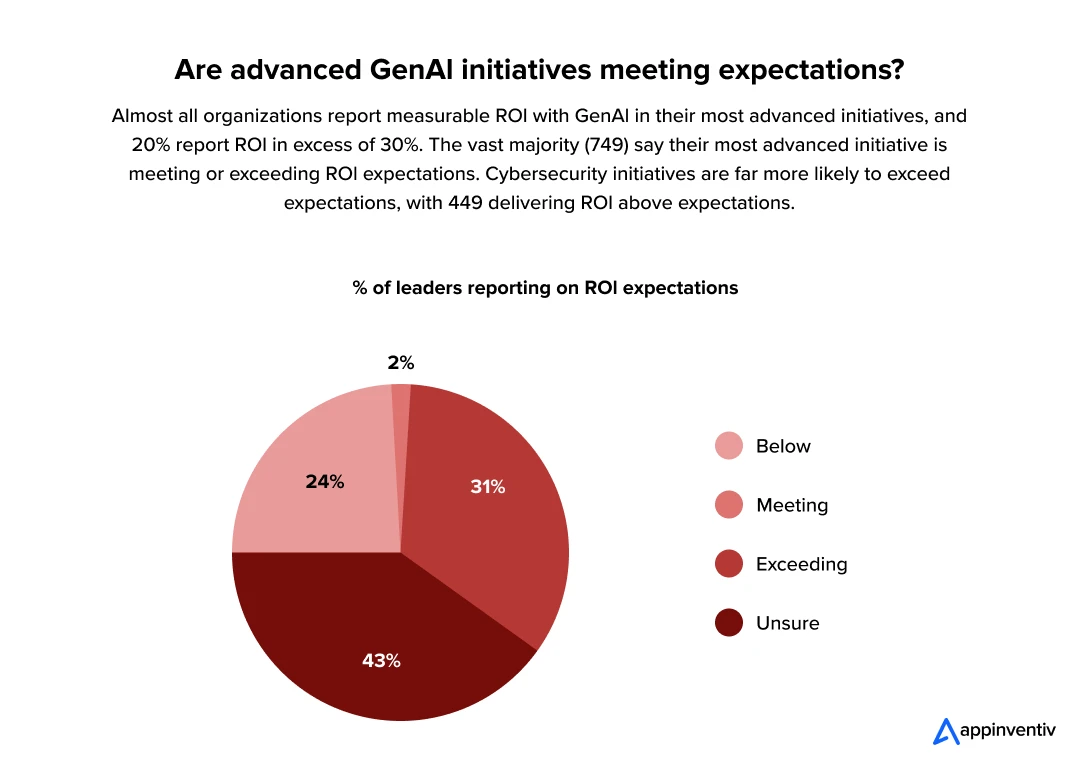
Risk, Ethics & Compliance, Hiring Non-Negotiables
Ignoring compliance, ethics, or risk management can derail an AI project faster than any technical bug. Legal repercussions, reputational damage, or unintended bias not only delay deployment but can also lead to costly recalls or regulatory fines. As enterprises accelerate their AI adoption, risk and compliance aren’t optional — they must be engineered in.
Key Risks Enterprises Face
- Bias & Fairness
Bias detection and governance require more than coding, only generative AI software development experts can embed these processes at design time. Bias in training data or model behavior can lead to discriminatory outcomes, harming under-represented groups. This can result in reputational damage, legal action, or loss of user trust. - Hallucinations and Output Errors
Without compliance oversight, systems built by startup generative AI developers risk higher hallucination rates that undermine customer trust. - Security Risks
Includes vulnerabilities like prompt injection, data leakage, or adversarial attacks. These can expose sensitive data or allow malicious actors to manipulate model behavior. - Regulatory Fines and Legal Exposure
As laws like the EU AI Act, GDPR, and India’s DPDP Act come into force, non-compliance may lead to substantial financial penalties, injunctions, or being barred from operating in certain markets.
Hiring Criteria to Mitigate Such Risks
Finding truly qualified generative AI developers means going beyond resumes and GitHub repos. When evaluating generative AI developers (or teams), look for these non-negotiable skills & experience:
- Experience with fairness metrics (e.g. Demographic Parity, Equal Opportunity) to test for bias in both training data and model output.
- Competence with explainability tools like SHAP, LIME, or Captum to reveal why a model made a specific decision.
- Familiarity with global regulations: GDPR (EU), HIPAA (US, health), DPDP (India) etc., and how they affect model behavior, data residency, and privacy.
- Hiring criteria must include Generative AI project experience in building audit trails, drift detection, and monitoring systems.
Evaluating Developers vs Partnering with Appinventiv
Hiring generative AI talent isn’t just about filling a role; it’s a high-stakes decision. A developer might look sharp on paper, but can one person really deliver a system that’s reliable, compliant, and ready to scale across the enterprise? For many organizations, the real challenge becomes clear during the hiring process: it’s not about finding a smart coder, it’s about assembling the right mix of expertise.
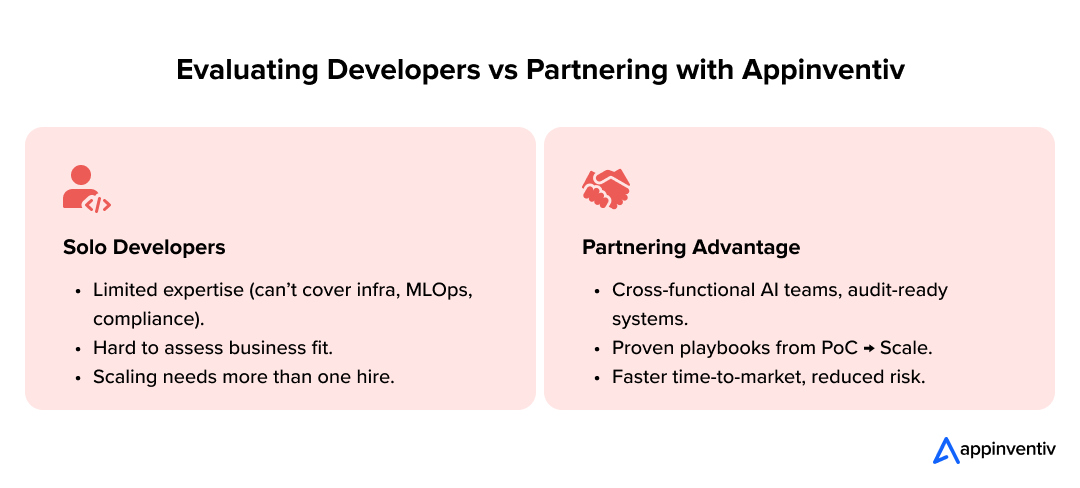
Tips on How to Hire Generative AI Developers
Resumes and GitHub links only go so far. If you’re serious about building production-grade AI, you need to look deeper.
- Technical test
A strong generative AI developer hiring process replaces generic coding quizzes with real-world RAG or orchestration tasks. A good technical test is asking custom generative AI application developers to build a retrieval-augmented pipeline grounded in real enterprise data. If they can’t ground outputs in data or wire up something with LangChain or AutoGen, they’re not ready for enterprise work. - Portfolio check
Don’t stop at demos. To hire experienced generative AI developers, look for systems that have been deployed, with uptime metrics, monitoring dashboards, or retraining pipelines, proof that they’re true generative AI software development experts. Someone who’s only ever called an API or published academic notebooks won’t be prepared for the messiness of production. - References & due diligence
Another key point in the tips for hiring AI developers in generative AI is speaking with past clients. References matter — ask about compliance practices when you hire remote generative AI developers, especially around retraining and governance. Many developers underestimate the grind of keeping systems compliant with laws like GDPR, HIPAA, or the EU AI Act.
Why This Often Fails
Even with the right checks, hiring individuals for this space is tough.
- Breadth of expertise is rare
Generative AI work touches too many areas — fine-tuning, pipelines, MLOps, compliance, infrastructure. No single person is fluent in all of it. At best, you’ll get strength in one or two areas, and gaps everywhere else. - Compliance and business fit are hard to measure
You can test coding, but how do you judge whether someone can design audit trails, apply fairness metrics, or explain trade-offs in terms of ROI to a boardroom? Those skills are harder to screen for but often make the difference between success and failure. - Scaling takes more than one hire
Even if you find a talented developer, scaling to enterprise deployment isn’t a one-person job. You’ll still need data engineers, MLOps specialists, compliance officers, and SMEs pulling in the same direction. Piecemeal hiring often slows things down and scatters accountability.
Why Companies Work With AI Partners Instead of Solo Developers
Below mentioned are a few reasons why enterprises increasingly prefer partnering with specialized AI firms over trying to staff every role internally. A partner brings:
- Cross-functional teams already structured for enterprise AI (LLM experts, MLOps engineers, data scientists, compliance specialists).
- Proven playbooks for discovery, PoC, MVP, and scaling phases — reducing risk of failure at the PoC-to-production transition (where, as studies show, over 70% of AI projects collapse).
- Compliance-first infrastructure with monitoring, audit readiness, and governance built in — something individuals rarely deliver alone.
- Speed to market by avoiding the 6–12 months often needed to assemble and train an in-house team.
Success needs tech depth, compliance, and clear outcomes.
Appinventiv helps you get it right from day one.
Why Enterprises Choose Appinventiv
When the cost of failure is measured in millions of dollars — from re-engineering overruns to regulatory fines — enterprises cannot afford uncertainty. Hiring generative AI developers is not about filling a seat; it’s about building the backbone of your AI future. Appinventiv specializes in building generative AI teams that can take clients from PoC through global rollout.
That’s why leading enterprises partner with Appinventiv as their generative AI consulting company. We don’t just provide developers — we deliver end-to-end AI programs designed to scale.
The Appinventiv Advantage
- Pre-vetted AI squads: Teams with proven expertise across LLMs, MLOps, data engineering, and compliance.
- Proven track record: Delivered 1,000+ enterprise-grade solutions across diverse industries.
- End-to-end delivery: From discovery and PoC to deployment, monitoring, and retraining.
An Enterprise generative AI team is the backbone of long-term AI success — not a single hire, but coordinated expertise.
What We Deliver
- Breadth: Developers, infrastructure specialists, and compliance experts under one roof.
- Speed: Hiring cycles reduced from months to weeks, accelerating time-to-market.
- Scale: Seamless progression from PoC to global deployment.
- Compliance-first engineering: Systems designed to be audit-ready from day one.
Appinventiv helps reduce the overall cost of hiring generative AI developers by offering ready-made, cross-functional squads. Apart from that with our generative AI software development services, we accelerate your AI journey safely and profitably.
Book a strategy call with Appinventiv today to move from ambition to production.
FAQs
Q. How to Hire AI Developers for Generative AI Projects?
A. Start by asking yourself what stage you’re at. Are you just testing an idea, building a proof of concept, or ready for a system that can scale across the business? Once you know that, look for developers who’ve done real work beyond experiments. Someone who’s only played with OpenAI APIs won’t cut it. To hire best generative ai developers make sure they have experience in deploying models, setting up monitoring, and making sure the system holds up in production.
Q. How much does it cost to hire a generative AI developer?
A. It depends heavily on location and experience. In the US, senior developers can earn $150K–$250K a year. In Europe, the range is usually €90K–€160K ($105K–$187K). In India, packages tend to fall between ₹20–50 LPA ($24K–$60K). Freelancers often bill hourly — anywhere from $80–$150. Keep in mind, though, the salary is only the surface. You’ll also be paying for infrastructure, data operations, and compliance. When those are added, the real cost of hiring often ends up two or three times higher than expected.
Q. Why should we consider partnering with Appinventiv for generative AI development?
A. Because AI at scale is rarely a one-person job. You need model experts, MLOps engineers, data specialists, and compliance professionals working together. Building that kind of team in-house can take months, sometimes years, and cost millions. Appinventiv already has those teams in place. We’ve delivered 1,200+ enterprise projects, so the learning curve and risks are far lower. For enterprises that can’t afford trial and error, partnering is often the faster and safer route.
Q. What are the best platforms for hiring generative AI developers?
A. If you’re looking for freelancers or short-term help, platforms like LinkedIn, Upwork, or Toptal are common choices. Communities such as Hugging Face also have strong talent pools. These options work well for smaller experiments or pilot projects. But for enterprises aiming for production-ready systems, you’ll usually need a dedicated team rather than piecing together individuals from job boards.
Q. What is the hiring process for generative AI developers?
A. The process to hire generative AI developers usually starts with defining what success looks like – do you need a chatbot pilot, fraud detection model, or full orchestration system? From there:
- Screen candidates for hands-on experience, not just academic projects.
- Give a practical test — for example, ask them to build a small RAG pipeline or set up monitoring for drift.
- Review their portfolio for real deployments, not just demos.
- Check references specifically around compliance and retraining.
This way, you’re hiring someone who’s been through the whole cycle, not just someone who can write prompts.
Q. What specific technical skills should I look for in a generative AI developer?
A. Look for experience with:
- Large language models like GPT-4, Claude, or LLaMA, including fine-tuning.
- Retrieval-augmented generation (RAG) pipelines with Pinecone or Weaviate.
- Multi-agent orchestration frameworks such as LangChain or AutoGen.
- MLOps — CI/CD pipelines, monitoring, and retraining.
Beyond that, the best developers understand compliance and governance. They can explain decisions to business leaders and ensure the system can stand up to an audit. In other words, you’re not just hiring a coder – you’re hiring someone who can bridge AI research with real business outcomes.


- In just 2 mins you will get a response
- Your idea is 100% protected by our Non Disclosure Agreement.

13 Ways Generative AI is Transforming the Hospitality Industry
Key takeaways: The most mature applications of Generative AI for hospitality are in guest service, revenue management, marketing, and operations automation. Real value comes from integrating generative AI into hospitality operations and existing PMS, CRS, CRM, and POS systems, rather than using stand-alone tools. Successful programs treat Generative AI in hospitality as a product, incorporating…
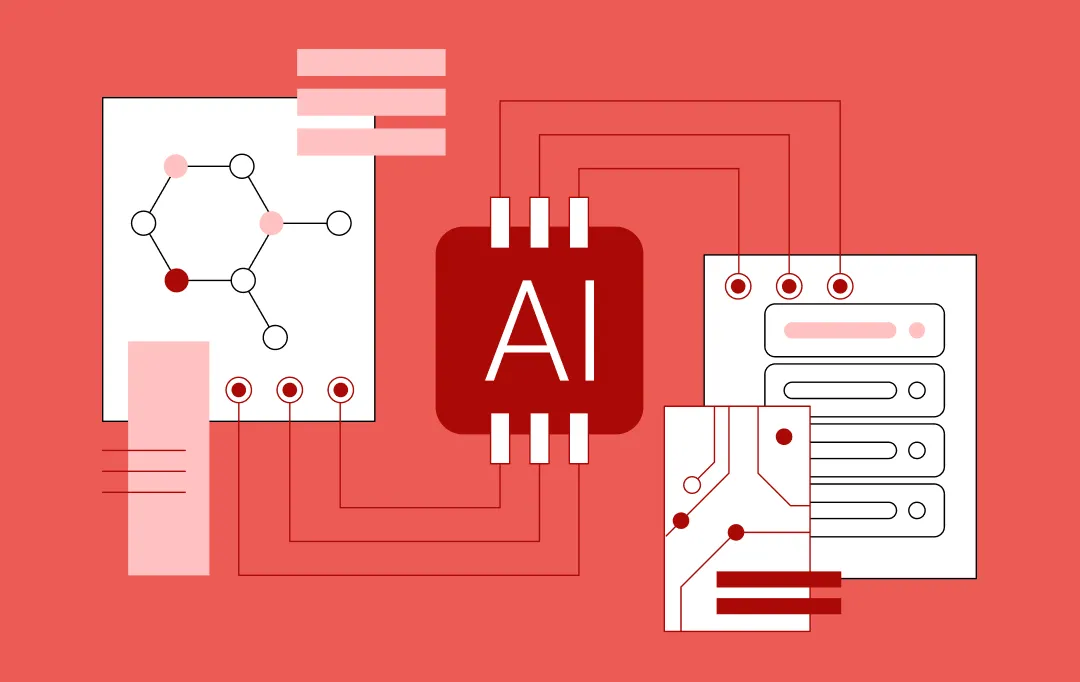
Scaling AI Initiatives: Why MLOps Matters More Than DevOps
Key takeaways: DevOps runs systems. MLOps keeps decisions accurate. MLOps vs DevOps is a leadership choice, not a technical one. Scaling AI without MLOps only scales risk. MLOps turns AI into infrastructure, not experiments. Operational maturity beats model sophistication. Real advantage comes from mastering DevOps and machine learning together. Most leadership teams don’t fail at…
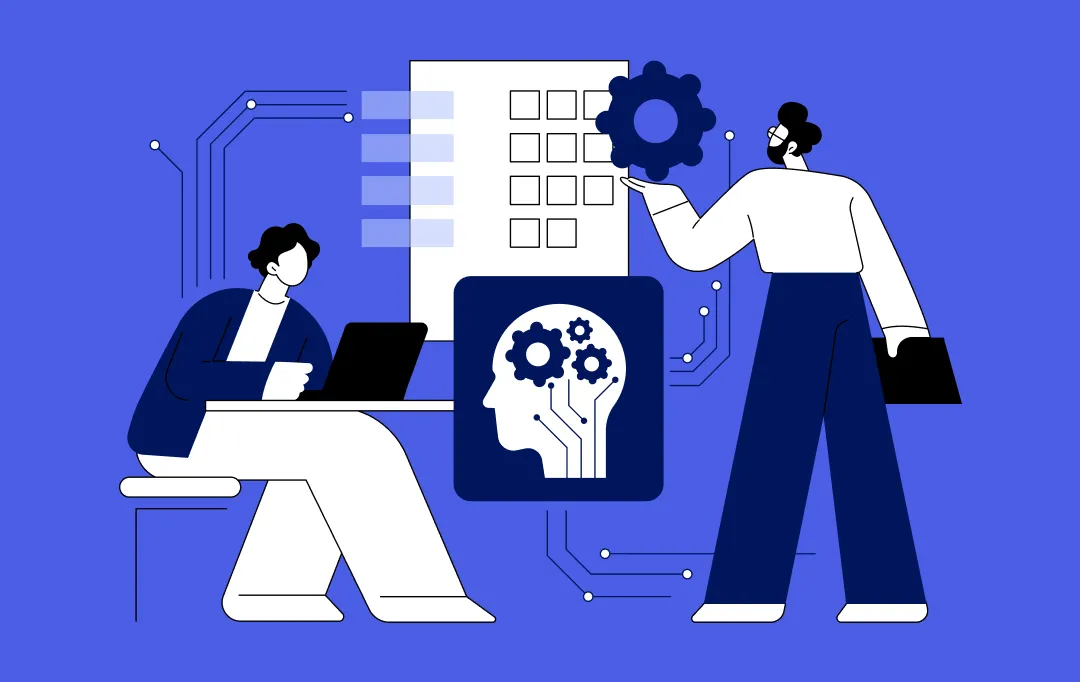
Melbourne's AI Reality Check: 13 Industries That Chose Evolution
Key takeaways: 68% of Australian companies already use AI. Early adopters gain 12-18 months of competitive advantage before AI becomes a baseline expectation 48% see positive returns within year one. Average returns hit 3.5X, with top performers reaching 8X. Basic automation pays off in 3-6 months Winners treat AI as a business transformation, not tech…


















